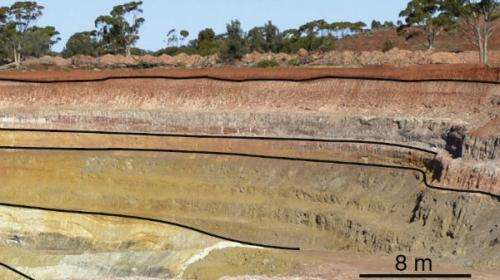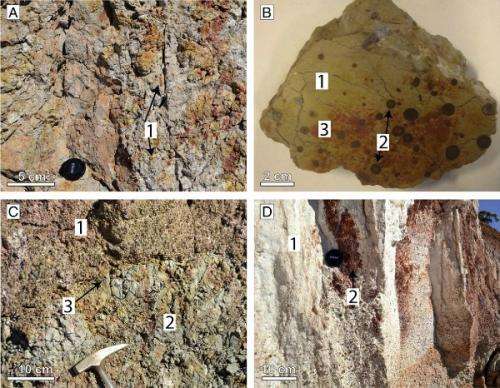Massive river system buried under today's Goldfields

A CSIRO geologist has been studying the way small, iron-rich stones formed in the deeply buried river systems that once drained much of what is now southern WA.
In so doing, Dr Robert Thorne paints a picture of what the present-day Goldfields and Great Southern may have looked like 35–45 million years ago.
He says about 45 million years ago, wetter conditions caused open channels to form, creating river systems that mostly drained into the Eucla Basin.
These rivers and creeks had kaolinitic clay beds, and seasonal rains successively wet and dried them, providing the conditions needed for evolution of the small stones, known as pisoliths.
Dr Thorne says pisoliths began to form when tiny particles in the river bed acted as nuclei around which iron salts could precipitate.
"You get precipitation of goethite, which is a hydrated iron oxide, around a nucleus which might be ferruginised clays, or in some places wood fragments," he says.
In examining the chemistry behind the process, Dr Thorne says his team is learning more about how these river systems formed in what are now WA's arid goldfields.
The presence of wood, for example, provides clues about the river environment.
"We learn a little more about the drainage system… It's a bit wetter, a bit hotter, with woody plants growing on the banks," Dr Thorne says.
Bacterial helpers

Dr Thorne's team examined the pisoliths under electron microscopes, finding evidence of microorganisms that may also have helped form them.
Dr Thorne says the bacteria could have played an active role in the precipitation of iron oxide, which was formed in their metabolic processes, or they could have acted as passive precipitation sites.
"[Bacteria] cell walls are generally negatively charged, and they attract the iron [and other] positively charged elements," he says.
"[These positively charged ions] nucleate on the cell walls, then that reduces the activation energy for continued precipitation of iron oxide on these cell walls."
Dr Thorne says the pisoliths formed and reformed many times.
"The river dries out, and [later] you get a bit more water coming, then movement and breaking and erosion on the outer layers of the pisolith, and then reformation and that process begins again."
His team obtained most of the pisoliths used in this study from the walls of open pit mines.
More information: Robert Thorne, Ravi Anand, Alexandra Suvorova, "The formation of fluvio-lacustrine ferruginous pisoliths in the extensive palaeochannels of the Yilgarn Craton, Western Australia," Sedimentary Geology, Volume 313, November 2014, Pages 32-44, ISSN 0037-0738, dx.doi.org/10.1016/j.sedgeo.2014.08.004.
Provided by Science Network WA





















